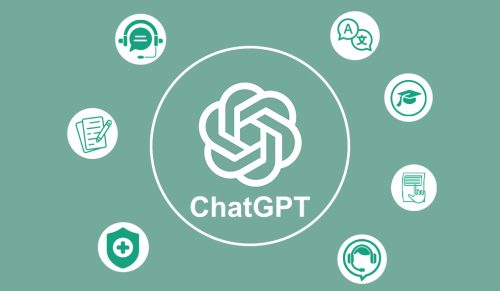ChatGPT, developed by OpenAI, is a cutting-edge language model that can generate human-like text based on the input it receives. It has numerous applications, ranging from casual conversation to professional content creation. This article will provide a comprehensive guide on how to use ChatGPT effectively, covering best practices and various use case scenarios.
Understanding ChatGPT
ChatGPT is built on the GPT-4 architecture, which stands for “Generative Pre-trained Transformer 4”. It has been trained on a diverse range of internet text, enabling it to generate coherent and contextually relevant responses. However, it doesn’t have consciousness or understanding but predicts and generates text based on patterns it has learned.
Getting Started with ChatGPT
To use ChatGPT, you typically interact with it through an interface provided by OpenAI or integrated into third-party applications. Here’s a step-by-step guide to get started:
- Access the Platform: Sign up on the OpenAI website or a platform that integrates ChatGPT.
- Input Your Query: Type your question or prompt into the text box.
- Receive the Response: ChatGPT processes your input and generates a response.
- Refine Your Query: If the response is not satisfactory, refine your query or provide more context.
Best Practices for Using ChatGPT
1. Be Clear and Specific
The clearer and more specific your input, the better the response you will get. Avoid ambiguous language and provide as much detail as necessary.
Example:
- Less Clear: “Tell me about history.”
- More Clear: “Give me a brief overview of the causes of World War I.”
2. Use Contextual Information
Providing context helps ChatGPT understand the background and generate more relevant responses.
Example:
- Without Context: “What’s the weather like?”
- With Context: “What’s the weather like in New York City today?”
3. Break Down Complex Queries
If you have a complex question, break it down into smaller, more manageable parts.
Example:
- Complex Query: “Explain quantum mechanics.”
- Broken Down: “What is a quantum particle? How do quantum particles interact?”
4. Experiment with Rephrasings
If ChatGPT doesn’t provide a satisfactory answer, try rephrasing your question or providing additional information.
Example:
- Initial Query: “Why is the sky blue?”
- Rephrased: “Can you explain why the sky appears blue during the day?”
5. Use System Messages for Tone and Style
You can guide ChatGPT on the tone and style of the response by framing your request accordingly.
Example:
- Formal: “Please provide a detailed analysis of economic factors contributing to inflation.”
- Informal: “Can you break down what’s causing prices to go up lately?”
Use Case Scenarios
ChatGPT can be used in a variety of scenarios, from casual to professional settings. Here are some common use cases:
1. Personal Assistant
Tasks: Scheduling, reminders, general information searches, and more.
Example:
- “Set a reminder for my meeting at 3 PM tomorrow.”
- “What’s the best route to get from my house to the office?”
2. Content Creation
Tasks: Writing articles, generating ideas, drafting emails, and creating social media posts.
Example:
- “Generate an outline for an article about renewable energy sources.”
- “Write a friendly email to thank a colleague for their help on a project.”
3. Education and Tutoring
Tasks: Answering questions, explaining concepts, and providing study tips.
Example:
- “Explain the Pythagorean theorem.”
- “What are the key points of Shakespeare’s Hamlet?”
4. Customer Support
Tasks: Responding to customer inquiries, providing product information, and troubleshooting issues.
Example:
- “How do I reset my password?”
- “What are the features of the latest software update?”
5. Brainstorming and Ideation
Tasks: Generating ideas for projects, problem-solving, and creative thinking.
Example:
- “What are some unique marketing strategies for a new product launch?”
- “Give me some ideas for a science fiction short story.”
6. Professional Development
Tasks: Resume writing, interview preparation, and career advice.
Example:
- “How should I format my resume for a tech job?”
- “What are some common interview questions for a project manager role?”
Advanced Tips for Using ChatGPT
1. Leveraging System Prompts
System prompts are special instructions that guide the model on how to behave or what style to adopt. Use them to tailor responses to specific needs.
Example:
- “You are a helpful assistant. Provide a step-by-step guide to planting a garden.”
2. Iterative Refinement
Sometimes, the first response may not be perfect. Use an iterative process to refine the output.
Example:
- Initial Response: “Plant seeds in soil.”
- Refined Query: “Can you provide a detailed step-by-step guide on planting seeds in soil?”
3. Utilizing External Data
While ChatGPT doesn’t have real-time data access, you can provide it with specific data to generate more accurate responses.
Example:
- “Based on the following data, analyze the market trends: [Insert data].”
4. Multi-turn Conversations
Engage in multi-turn conversations to build on previous responses, making interactions more natural and contextually rich.
Example:
- User: “Tell me about the Great Wall of China.”
- ChatGPT: “The Great Wall of China is a series of fortifications made of stone, brick, tamped earth, and other materials.”
- User: “How long is it?”
- ChatGPT: “The Great Wall is approximately 13,171 miles (21,196 kilometers) long.”
Ethical Considerations
When using ChatGPT, it’s important to be aware of ethical considerations:
- Privacy: Avoid sharing personal, sensitive, or confidential information.
- Bias: Be mindful that AI can reflect and propagate biases present in the training data.
- Misinformation: Verify critical information from trusted sources, as AI can sometimes generate plausible-sounding but incorrect information. In other words just because they say “Trust the Science” doesn’t necessarily mean it’s true!
Give ChatGPT a try
I’ve found ChatGPT to be a versatile tool that can significantly enhance productivity and creativity across various domains. By following best practices and exploring different use case scenarios, users can maximize the benefits of this advanced AI model. Whether for personal use, educational purposes, or professional tasks, understanding how to effectively interact with ChatGPT will unlock its full potential, providing valuable assistance and insights.
What to read next?
- How to make your Morning Routine Successful
- Top 7 Instant Pots: Understanding the Many Different Models and Choosing the Right One for You
- ChatGPT FAQs, Troubleshooting, Advanced Features, and Practical Applications
- Understanding ChatGPT vs GPT-4 vs DALL-E – When do you use which one?
- 10 Tips for using ChatGPT + a detailed example of how a student can use ChatGPT for school projects.
- Ashwagandha Mental Health Benefits for teens and adults.
- 3 Fish Taco Recipes: Baja-style, Chipotle, and Blackened. Which is your fav?
- Google Bard vs ChatGPT – which one is best?
- The 5 Best Sous Vide Machines
- Traeger Flatrock Grill vs Blackstone Griddle

